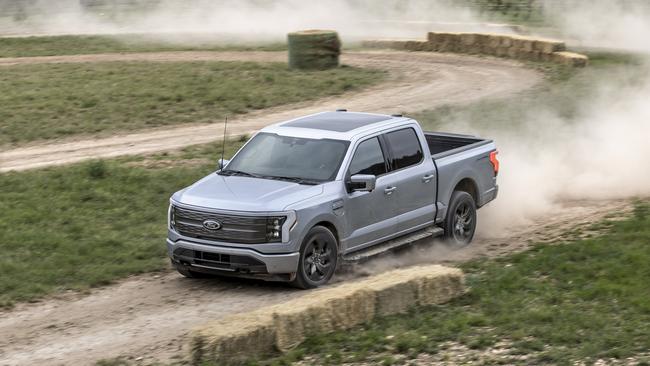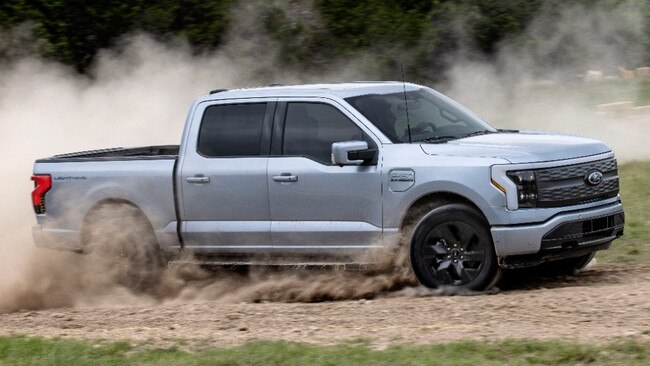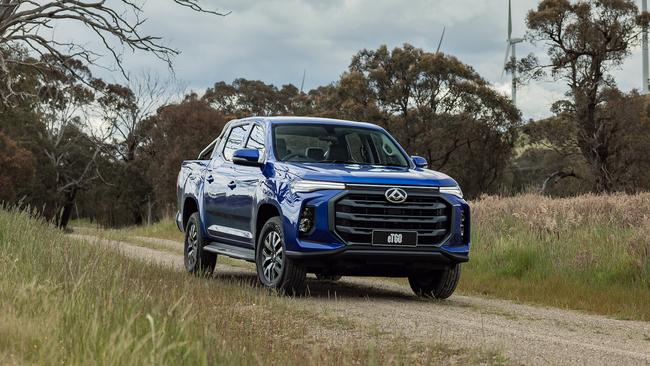EV utes: where is the electric equivalent of the Toyota HiLux and when will Ford’s F-150 Lightning land?
The ute, spearheaded by the Toyota HiLux, is Australia’s top selling car. So why aren’t electric utes cropping up everywhere? Here’s the latest on EV ute development.

A lack of electric utes in Australia is stopping large corporate vehicle fleets from going green, according to a leading renewable energy transformation expert.
Brian Innes, consultant at energy transition and consultancy firm Partners in Performance, says many corporate fleets, as well as the Federal Government fleet – which aims to be 75 per cent electric by 2025 – have no choice but to wait until suitable vehicles arrive in Australia.
“We just haven‘t got enough electric utilities available, either battery electric vehicles or plug-in hybrids, so it’s a case of hoping that the manufacturers will get there,” Mr Innes said.
“Whether you look at Government fleets or major companies that have got 5000 cars in their fleets, it‘s a big hunk of utilities.
“Over the next few years, we’ll see utilities coming to the market that are either full electric or plug-in hybrids, and then we’ll see if the country can catch up.”
Developing an electric ute with a driving range that consumers would find sufficient is one of the big hurdles in getting them to the Australian market.
“The reality of electric vehicles is they have a less dense fuel than petrol, so EV designers are eking everything they can out to get to that magical 400km driving range mark, which is probably the customer-acceptance level,” Mr Innes said.

“To get more than 400km out of a utility, you‘ve got to look at air resistance, because a ute wasn’t designed to be efficient, and there’s a lot of weight floating around.
“Then you’ve got the added problem of anyone who buys a utility, they often want to latch a boat or caravan or trailer onto it, which is an absolute range killer, so a much bigger system is required.
“The big problem is the major brands of utilities that people trust have been Japanese or American, and the only one that’s gone there at the moment is Ford, with the F-150 Lightning, which hasn’t come to the Australian market yet.
“So we‘re all waiting for Mazda and Toyota and Ford and Holden to come out with some electric version of the big trucks that everyone seems to like.”
Utes continue to be huge sellers in Australia, with a total of 256,382 sold here in 2022, up 1.2 per cent on the previous year, with the Toyota HiLux and Ford Ranger emerging as the two highest-selling vehicles in the country, selling 64,391 and 47,479 units respectively.

Mr Innes also supports the Federal Government’s decision to make EVs costing up to $84,916 exempt from Fringe Benefits Tax, believing the legislation will make it easier for employees of smaller businesses to get behind the wheel of a zero-emissions vehicle.
“The salary-sacrificing model is the model which I think has got some grunt behind it right now, but I also think the corporates haven’t really got their heads completely around it yet,” Mr Innes said.
“The power of these FBT rules is making staff happy in their businesses, because you can get access to the smaller end of the electric-vehicle market, where I think manufacturing has caught up with demand.
“If a smaller EV under $84,916 is what someone wants, then they‘re available and ready for the salary sacrificing, which is a ripper of a deal.”
The Electric Vehicle Discount, which includes making eligible EVs exempt from the 5 per cent import tariff, translates to savings of $9,000 a year on a $50,000 EV for an employer or savings of $4,700 for an individual on a salary-sacrifice arrangement.




To join the conversation, please log in. Don't have an account? Register
Join the conversation, you are commenting as Logout